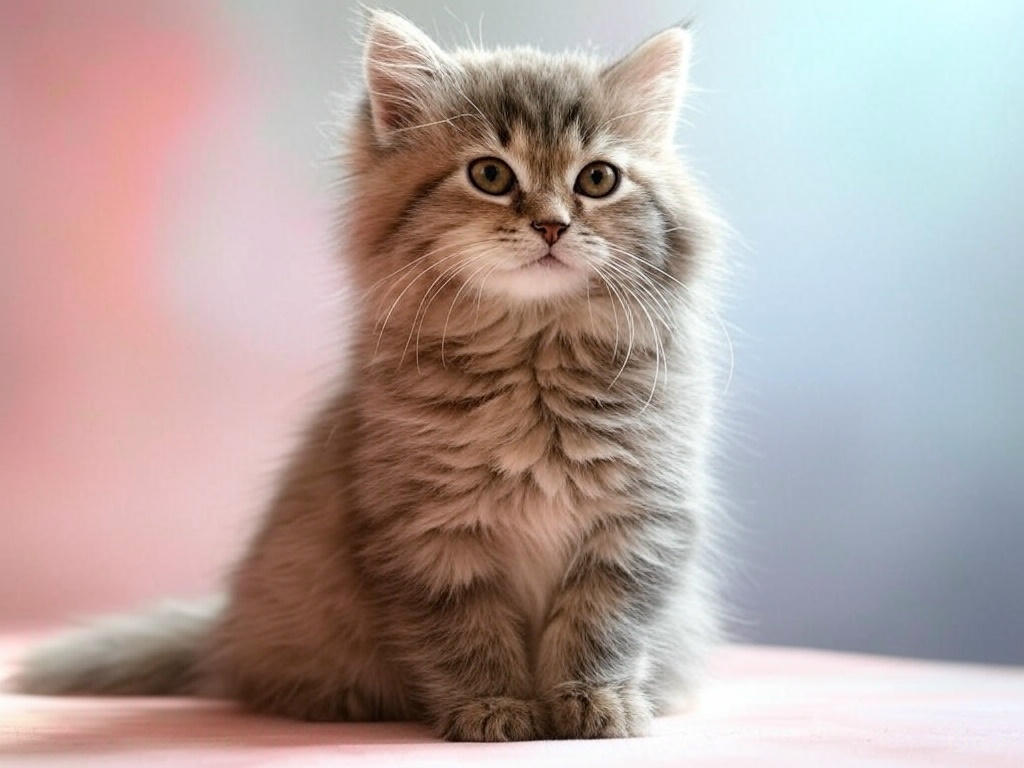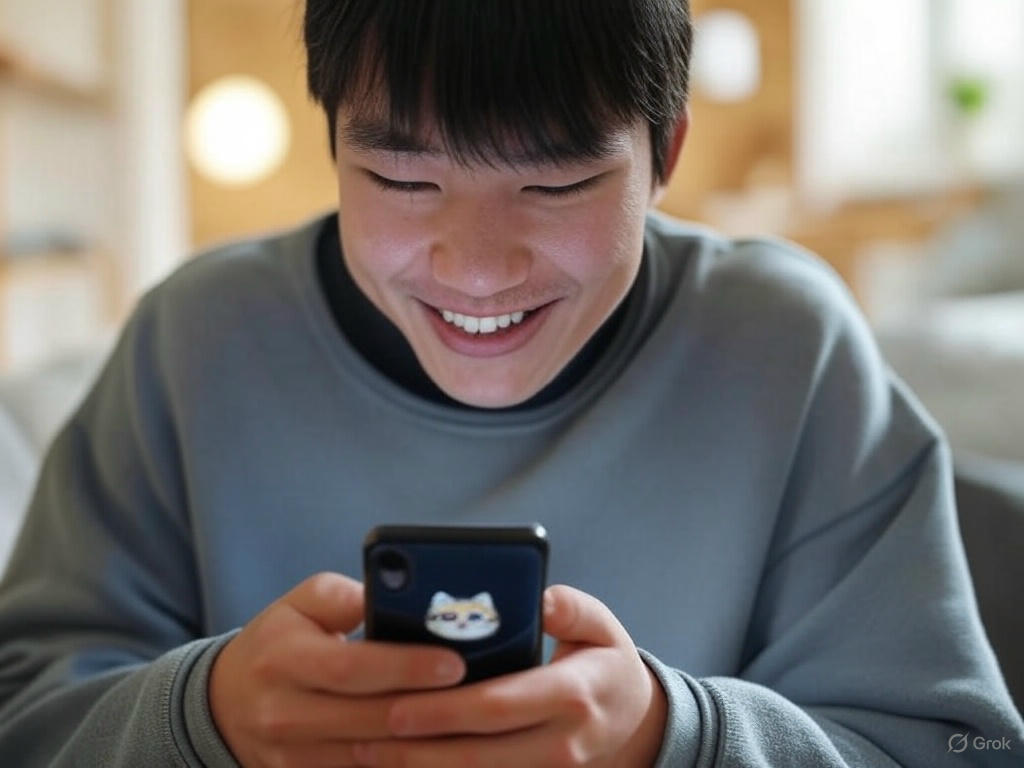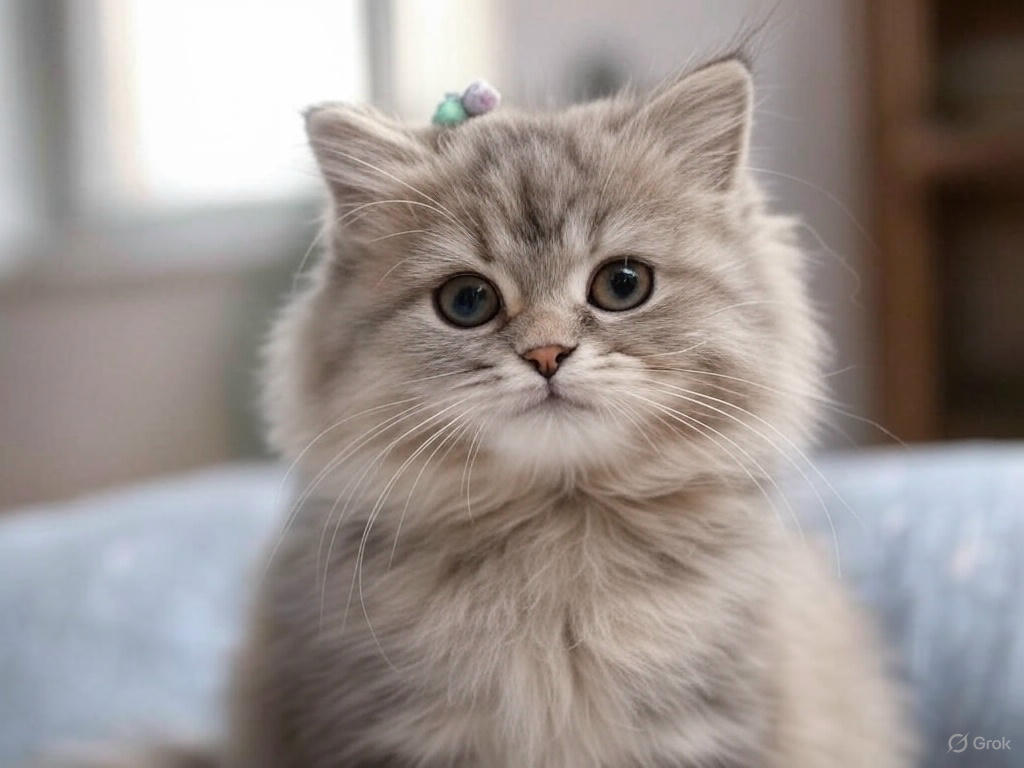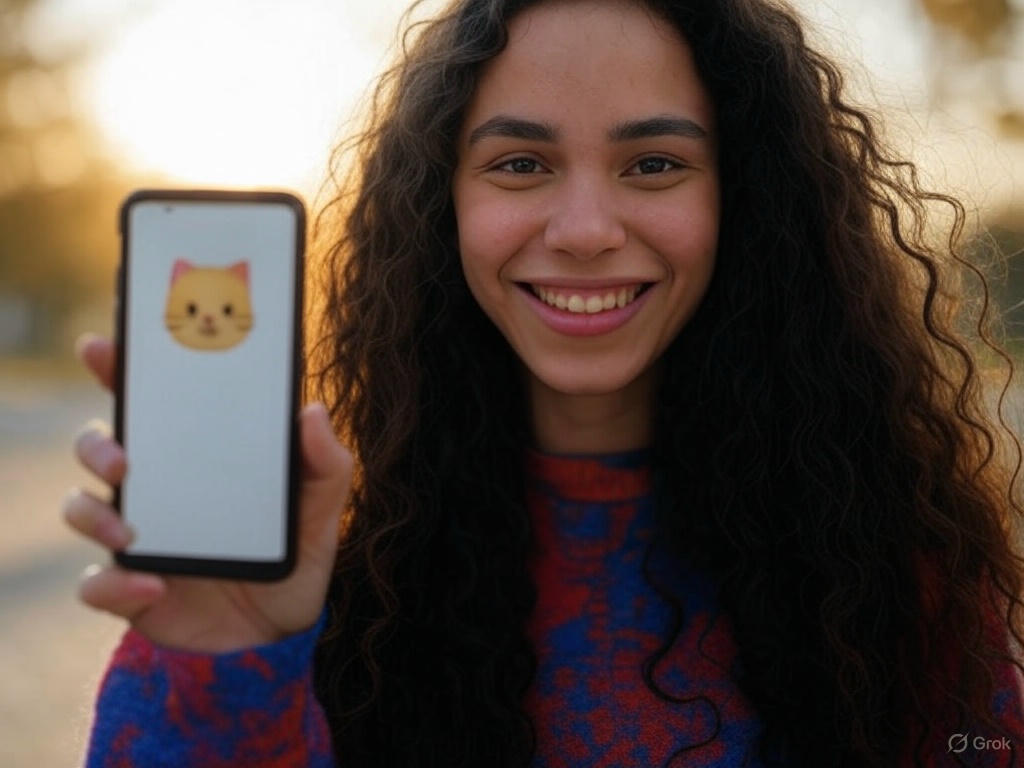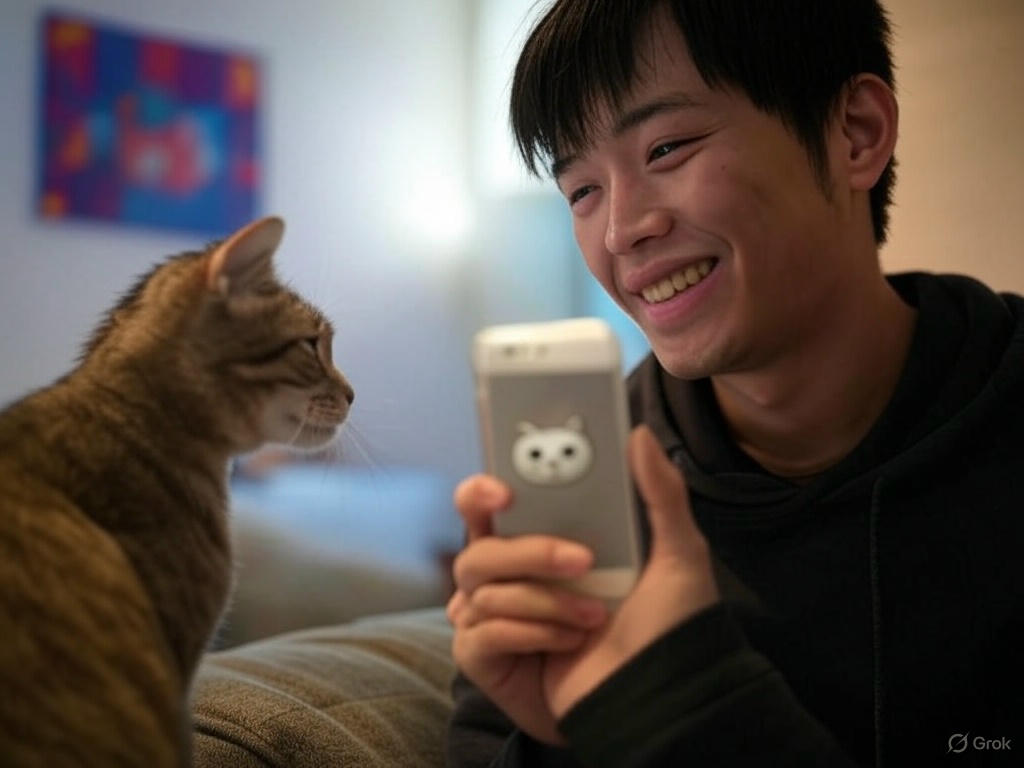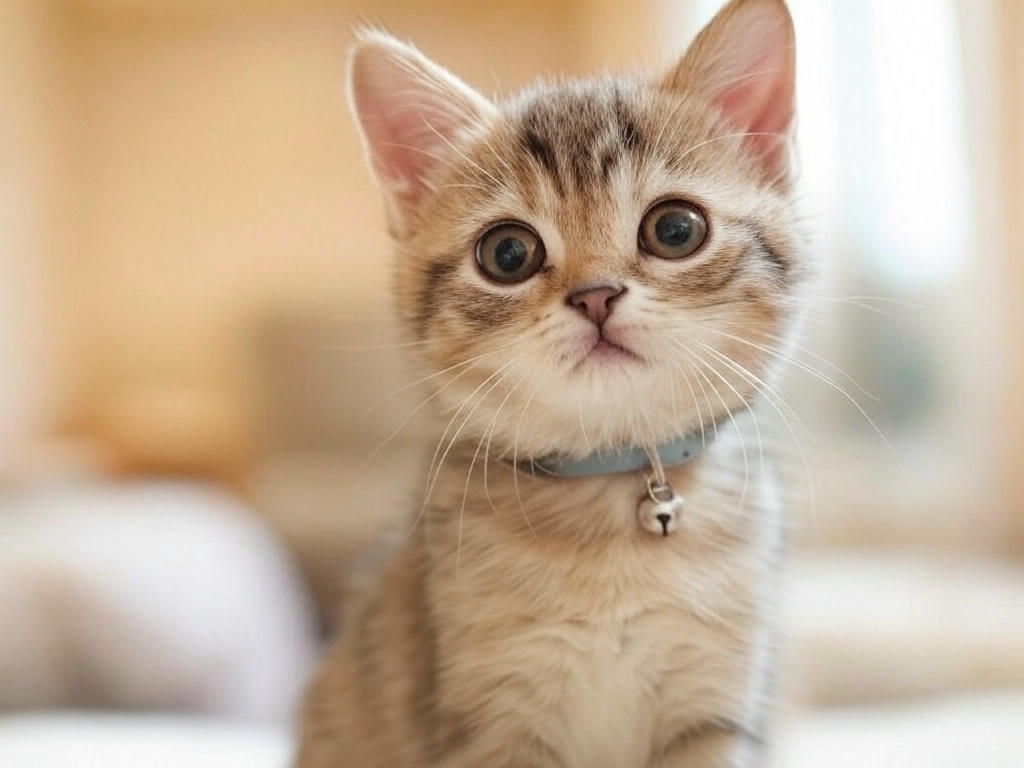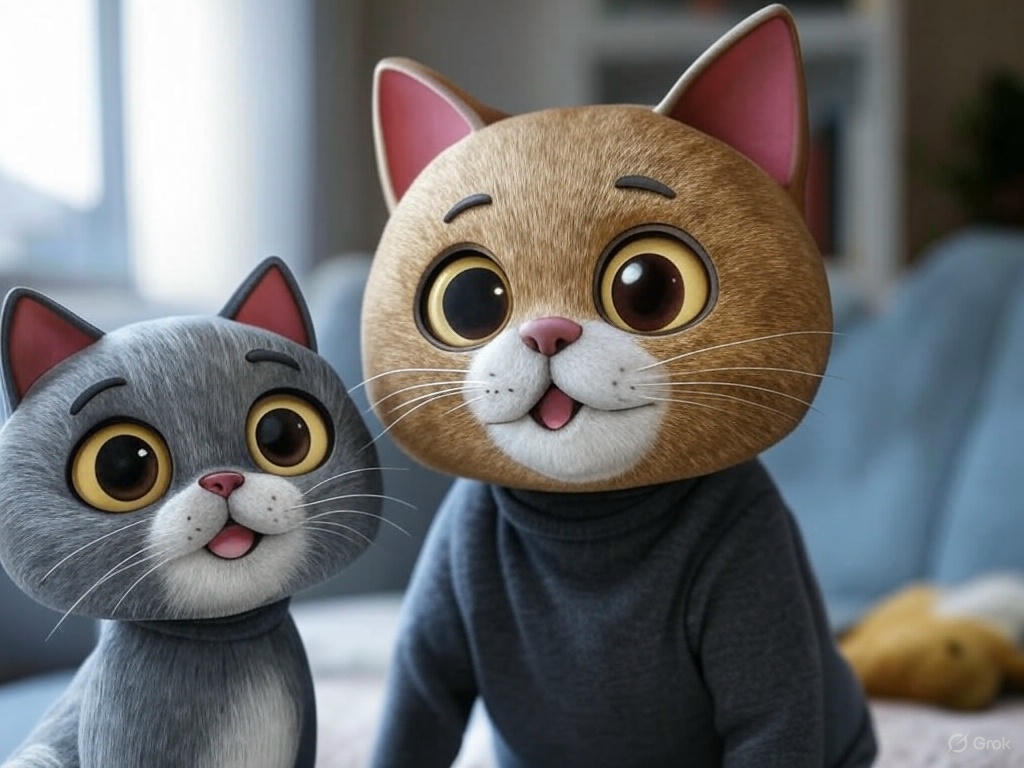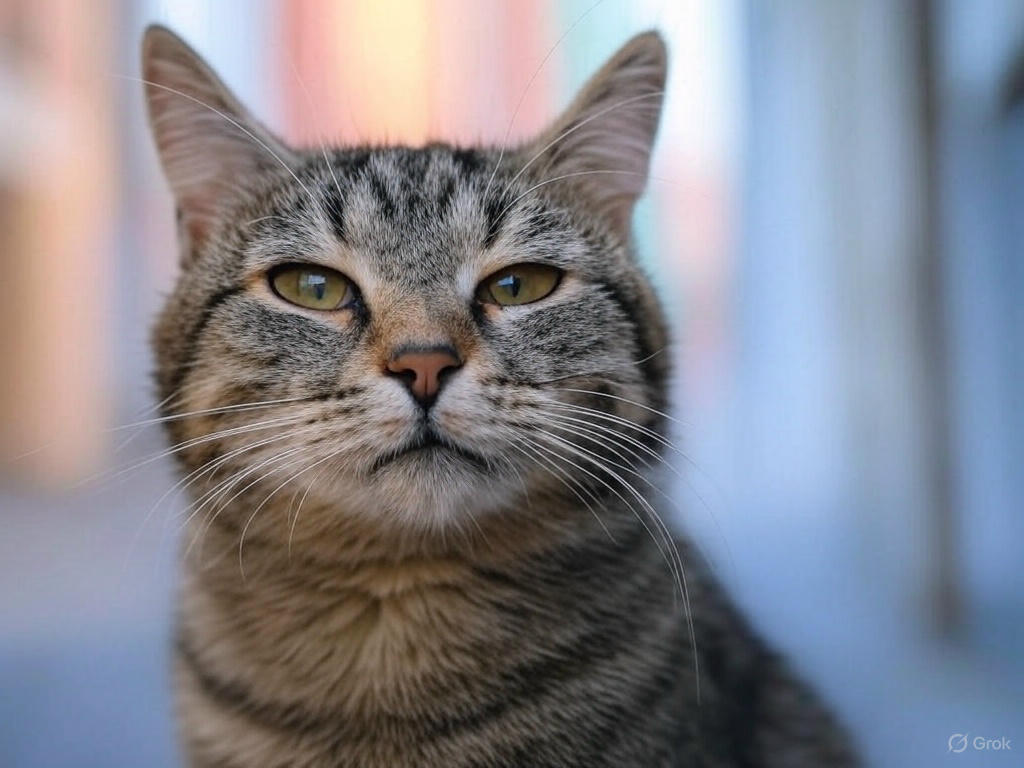The Rise of Cat Emojis on TikTok: An Unexpected Cultural Phenomenon
TikTok has evolved far beyond a simple video-sharing platform. Over the past few years, it has become a digital space where trends are born, cultures are shaped, and language itself is reinvented. While dance routines, viral challenges, and comedy skits still hold significant space on the app, one subtle yet wildly popular trend has steadily clawed its way to the forefront: the widespread use of cat emojis.
These feline symbols have transformed into more than just cute icons. They are now an expressive tool, a visual tone, and a language in their own right among creators. Whether someone is reacting with a teary-eyed cat face or showing excitement with a sparkly-eyed kitten, the range of meanings cat emojis carry on TikTok is as broad and layered as human emotion itself.
Understanding how these emojis have gained such prominence requires an exploration into digital language evolution, internet culture, and the power of collective behavior on social platforms. What began as a niche aesthetic has now taken root as a mainstream form of communication on the app.
The Emotional Power of the Cat Face
The expressive nature of cat emojis lies at the heart of their appeal. Unlike traditional smiley faces, cat emojis often show exaggerated emotions. Their wide eyes, dramatic tears, or smug smirks seem to capture feelings more intensely. On TikTok, where video content can range from highly personal stories to ironic takes on everyday life, these over-the-top expressions fit perfectly.
The teary-eyed cat, for instance, has become a favorite among users posting emotional or vulnerable videos. Rather than using a crying face emoji, the sad cat adds a layer of humor or cuteness to otherwise heavy content. It softens the blow of the emotion, making it more digestible for viewers and more shareable across the app.
At the same time, cat emojis give creators a way to exaggerate excitement, fear, or shock in a way that traditional emojis simply can’t. Whether a user is reacting to a shocking plot twist in a storytime video or a hilarious fail caught on camera, throwing in a few cat faces instantly boosts the emotional tone.
Aesthetic Appeal and Visual Language
Another factor in the popularity of cat emojis is their aesthetic versatility. In the fast-paced visual world of TikTok, content needs to be eye-catching. Cat emojis, with their soft shapes, expressive eyes, and playful vibe, naturally draw attention. They are cute and quirky, but also visually distinct enough to stand out in captions, comments, and overlays.
Many TikTok users have built entire aesthetics around these emojis. The use of cat faces pairs well with pastel filters, cozy backgrounds, and calming music, which are all staples of popular subgenres like softcore and cottagecore. Even outside these trends, cat emojis serve as a quick way to brand content and signal tone. If a caption ends with a pleading cat face, viewers immediately know to expect something adorable or emotionally charged.
This use of emojis as part of visual storytelling is a defining feature of TikTok culture. Unlike other platforms where text often supports the image, TikTok flips the script. Here, emojis are part of the show, playing as much of a role in storytelling as the visuals themselves.
From Meme Culture to Mainstream
The journey of cat emojis on TikTok wouldn’t be complete without mentioning their deep roots in meme culture. The internet has always had a love affair with cats. From early viral videos like “Keyboard Cat” and “Nyan Cat” to the countless GIFs shared on Reddit and Tumblr, felines have long been the unofficial mascots of online humor.
TikTok, being the newest stage for digital comedy, has inherited this legacy. But instead of sticking to videos of real cats, the platform has evolved the trend through emoji use. The stylized cats available on modern keyboards reflect a cartoonish ideal that aligns perfectly with TikTok’s whimsical style.
Creators often use cat emojis ironically, mocking overly emotional reactions or dramatizing minor inconveniences. This kind of humor, rooted in irony and exaggeration, aligns closely with Gen Z’s sense of digital expression. The result is a layered language where a simple cat face can convey sarcasm, sincerity, or a mix of both.
An Extension of Identity and Self-Expression
For many users, emojis are more than just decoration. They are part of how people present themselves online. TikTok creators carefully curate their content to reflect their personality, and cat emojis play a surprisingly large role in this self-expression.
A user who regularly includes cat faces in their captions may be signaling their alignment with a certain vibe or subculture. It could be softness, humor, chaos, or a mix of all three. The emojis become a shorthand for personality, like choosing an outfit or designing a room.
This form of emoji-based identity is especially strong among smaller creators who rely on relatable content and community engagement. By consistently using certain emojis, they create a sense of familiarity with their audience. It’s almost like a personal signature at the end of a post.
The Role of Algorithm and Trend Acceleration
TikTok’s algorithm also plays a massive role in accelerating the popularity of emoji use. Once a few popular videos begin using a specific emoji pattern, the platform’s recommendation system starts pushing more of that content to users who engage with it. This feedback loop leads to rapid adoption of visual trends like cat emojis.
Because TikTok is driven heavily by short-form virality, small trends can explode in days. A video using cat emojis might go viral for reasons unrelated to the emojis themselves, but once others see it working, they’re likely to imitate the format. This creates a snowball effect, where the trend becomes widespread simply because it’s everywhere.
Even TikTok’s comment sections act as trend incubators. Users repeat the same emojis and phrases, reinforcing the behavior. Seeing cat faces repeated in the top comments of a viral post reinforces the idea that they’re part of the cultural currency of the app.
Celebrity and Influencer Endorsement
Trends on TikTok often explode when high-profile creators start using them. Influencers with large followings frequently shape what becomes popular through subtle cues like emoji use. When a celebrity adds a sparkly-eyed cat emoji to their caption or overlay, millions of followers take note.
These followers, especially younger users, often replicate not just the content but the entire aesthetic of their favorite creators. This includes their emoji habits. In this way, a single cat emoji in a trending video caption can end up influencing countless posts in the following days.
The parasocial relationship between TikTok users and their favorite creators strengthens this effect. Fans want to feel closer to influencers, and mimicking their digital language is one way to build that connection.
The Psychology Behind the Popularity
There is also a psychological component behind the appeal of cat emojis. Research in digital communication shows that people respond more strongly to visuals than to text alone. Emojis trigger emotional responses more quickly, especially when they depict familiar or beloved animals like cats.
The exaggerated expressions of cat emojis also enhance this effect. Their wide eyes and dramatic features mimic the kind of facial expressions that humans instinctively recognize. This makes them powerful tools for empathy, even in a digital setting.
TikTok’s fast-paced, emotionally driven content environment only amplifies this. Videos are meant to evoke a feeling quickly, and emojis help deliver that feeling before a user even finishes watching the clip. Cat emojis, in particular, have a playful innocence that makes them appealing across a wide range of content.
The Creative Evolution of Cat Emojis on TikTok: From Reaction to Art Form
The Birth of a Visual Language
On TikTok, content thrives on innovation, and creativity often begins in the smallest details. While many may see cat emojis as just decorative flair, users of the platform have turned them into much more—a visual language that adapts, evolves, and expresses far beyond words. The flexibility of cat emojis allows creators to develop entire storylines, punchlines, and artistic expressions through a carefully placed sequence of characters.
This has led to an explosion of styles in how cat emojis are used. Some creators place them within captions to add context to their message. Others drop them directly into the video’s visual elements, syncing their appearance with beats, reactions, or on-screen action. In both cases, the emojis serve not only to entertain but also to create an emotional connection with viewers.
The artistry of these choices reveals how far TikTok users are willing to go to stand out, experiment, and ultimately communicate in a fresh and memorable way.
Overlaying Emotion with Intent
TikTok’s editing tools have made it easier than ever to incorporate emojis directly into video content. From strategically timed cat emoji pop-ups to emoji-based reaction shots edited into a story, creators are taking full advantage of these tools. In many cases, the emojis are carefully placed to reflect the emotional arc of the video. For instance, a creator sharing a personal story might gradually build up to a dramatic moment, punctuating the climax with a trembling cat face that reflects vulnerability or anxiety.
Some even go a step further, using emojis to represent different characters or moods within a single video. A smug cat face might play the role of an antagonist, while a bashful kitten might represent innocence or regret. In this way, cat emojis become a cast of visual actors, helping users convey complex emotions without needing additional dialogue or effects.
Emojis as a Form of Digital Satire
One of the most intriguing evolutions of cat emoji usage on TikTok is their role in satire. Many creators have found clever ways to use cat emojis ironically. These posts often parody the overuse of dramatic emotional expression, intentionally flooding captions or visuals with an excessive number of teary-eyed or panicked cat faces.
In doing so, they make fun of performative emotion, poking at how exaggerated online behavior has become. These satirical takes are often layered, with the emoji use working as a punchline for audiences who understand the subtext. For example, a TikTok video describing a minor inconvenience—like missing a bus—might be paired with ten crying cat emojis, clearly making a joke out of the overly dramatic tone.
This kind of humor plays particularly well on TikTok, where sarcasm, exaggeration, and meta-commentary are essential to the platform’s culture.
The Trend of Cat Emoji Roleplay
Another creative offshoot of the cat emoji phenomenon is emoji-based roleplay. While text-based roleplay has long existed online, TikTok creators have given it a visual twist using emojis. A user might portray themselves in a dramatic storyline using only emojis in their caption, inviting viewers to interpret the scene.
A sequence like “😼🧍♀️💔🐱🥺” might suggest a story of betrayal, heartbreak, and reconciliation—all without saying a single word. This kind of content engages viewers, encouraging them to decode the meaning or even respond with their own emoji narratives.
Roleplay content often overlaps with specific trends, such as POV storytelling. In a POV (point-of-view) video, the creator might assume a character and use cat emojis to amplify the tone—perhaps a menacing “😾” for a villain, or a pleading “😿” for a sympathetic figure. These small choices help bring the character to life and immerse the audience further.
Trend Challenges That Center Around Cat Emojis
TikTok thrives on challenges, and cat emojis have increasingly become a central element in many viral formats. One recent trend involved users creating a “Cat Emoji Mood Board,” where they listed different cat faces to represent their mood throughout the week. Each day featured a different emoji, from the energized morning cat to the exhausted bedtime feline.
Other challenges have invited users to interpret a random set of cat emojis and act out a skit based on them. This blend of improv and visual decoding becomes a fun, creative exercise that taps into both humor and emotional intelligence. It also encourages community participation, as users duet or stitch each other’s interpretations, layering their own spin on top of what others have done.
In these ways, cat emojis aren’t just a reaction—they become the core of the content itself.
A New Grammar of Emotion
With the wide range of emotions cat emojis convey, TikTok users have essentially created a new grammar—a set of visual cues that help others instantly understand tone and mood. Just as punctuation affects how we read sentences, emojis affect how we interpret digital content. A sarcastic sentence may be read differently when paired with a smirking cat face. A heartfelt video becomes more relatable when a sad kitten emoji appears in the caption.
Over time, this system of digital grammar becomes second nature to users. People know instinctively when to use a “😸” versus a “🙀.” Each cat emoji has developed its own emotional weight, shaped by repeated use, shared understanding, and meme culture.
This shared language deepens the sense of community among users. It feels like an inside joke—an unspoken code that unites people who “get it.” The more a person engages with this style of communication, the more fluent they become.
The Impact on Niche Communities and Subcultures
TikTok is known for fostering niche communities, and each has its own style of communication. Whether it’s BookTok, WitchTok, Cottagecore, or AltTok, the presence of cat emojis has found its way into the DNA of many subcultures. For example, in soft-spoken storytelling videos, creators may use sleepy or dreamy cat faces to create a calming effect. In fandom communities, users often pick specific cat emojis to represent their favorite characters, ships, or emotional beats.
Even aesthetic accounts—those focused purely on visual beauty—often incorporate cat emojis into captions, bios, or overlays. The emojis don’t just serve a communicative function; they also enhance the overall vibe of the content.
In this way, cat emojis adapt to the tone of the subculture they inhabit. Their versatility allows them to be reshaped, repurposed, and personalized by different groups, making them feel more meaningful and specific to the viewer.
Global Adoption and Multilingual Use
One of TikTok’s defining features is its global reach. Content spreads across countries and cultures in ways few other platforms can match. The visual nature of cat emojis plays a huge role in bridging language gaps. A caption full of cat emojis may be entirely understandable to someone who doesn’t speak the same language as the creator. Emotion, after all, is universal.
In this way, cat emojis become a form of cross-cultural storytelling. They allow users to communicate tone, context, and humor without relying heavily on text. The shared symbolism of a happy, sad, or mischievous cat face transcends language barriers and brings people from different backgrounds into a shared emotional space.
This accessibility is a key reason the trend has spread so quickly. It isn’t limited to English-speaking audiences or niche regions. Anyone, anywhere, can pick up on the vibe and contribute to the growing trend.
Creative Risks and the Edge of the Trend
Like any trend, the creative use of cat emojis on TikTok continues to evolve. While the most popular forms of emoji use are widely accepted, a growing number of creators are experimenting with new formats. Some are animating emojis within their videos. Others are creating entire “emoji-only” narratives with no words at all.
These creative risks push the boundaries of what can be done on the platform and challenge others to rethink how they use visual language. As the trend matures, audiences begin to crave novelty. The users who succeed are the ones who can innovate within the existing framework while still staying recognizable.
The best part of this creative freedom is that it’s available to everyone. A small account with no followers can go viral by using cat emojis in a clever or unexpected way. This democratization of content keeps the trend alive and dynamic.
Brands, Influencers, and the Business of Cat Emojis on TikTok
The Marketing Magnetism of Cat Emojis
When TikTok first exploded as a hub for bite-sized entertainment, few could predict that emojis—especially cat-themed ones—would become powerful tools for engagement. What began as user-generated fun has now drawn the attention of marketers, influencers, and brands eager to ride the wave. For businesses operating on TikTok, cat emojis aren’t just visual noise—they’re marketing gold.
These emojis hold a special power: they’re instantly recognizable, emotionally expressive, and culturally trendy. For marketing campaigns, this trifecta creates a low-effort, high-impact way to connect with users, especially Gen Z, who dominate TikTok and understand the underlying humor and emotion emojis convey. The platform’s emphasis on relatability and personality aligns perfectly with the tone these emojis bring.
Brands now strategically incorporate cat emojis to boost their relatability, soften the tone of promotional content, or even go viral by tapping into a community-driven language that feels less like marketing and more like friendly engagement.
Influencers Leading the Charge
Influencers were the first to spot the emotional weight cat emojis carried. Whether they’re micro-influencers with a few thousand followers or big names with millions, these creators understand the subtle art of emotional expression. A simple “me rn 😿” paired with a video of a failed makeup look or missed opportunity instantly communicates mood without oversharing. It’s that efficient communication style that makes cat emojis ideal for creators juggling humor, vulnerability, and commentary in under 60 seconds.
Influencers across niches—beauty, fashion, lifestyle, comedy, and even fitness—have found ways to incorporate cat emojis into captions, thumbnails, and reaction content. Their audiences, already trained to recognize the language of TikTok, respond positively. Posts with cat emojis often perform better in likes, shares, and saves because they signal emotional resonance or humor at a glance.
This visibility hasn’t gone unnoticed by brands.
Brands Imitating and Collaborating
With influencer strategies proving successful, brands have begun mimicking their emoji usage. Instead of polished, overly corporate posts, you’ll now find fast-food chains, skincare labels, and tech companies posting memes with “😺” or “😿” strategically placed in captions or TikTok voiceovers. It’s a subtle shift, but one that makes companies seem less intimidating and more human.
Some brands go beyond imitation. They partner directly with creators already fluent in the emoji-driven language of TikTok. These collaborations often produce viral results. A creator might receive a product, make a skit about it using their signature cat emoji flair, and suddenly that product is trending—not because of a hard sell, but because the audience connects emotionally.
Even major campaigns have begun to shift toward incorporating emoji elements. During product launches or promotional pushes, brands may encourage viewers to comment using a specific cat emoji to join a challenge or express their reactions. This turns the emoji into a participation token—simple, fun, and visually satisfying.
Cat Emojis as Part of the TikTok Shopping Experience
The introduction of TikTok Shop has opened up a new avenue for how emojis, especially cat emojis, are used in e-commerce marketing. Sellers on the platform use emoji-rich product descriptions to grab attention quickly. While scrolling, users are more likely to pause on listings that spark curiosity or entertain them, and cat emojis offer a way to stand out without seeming too pushy.
Live stream sellers also integrate emojis into their real-time presentations. While showcasing a product, they might fill the screen with “😻” emojis to signal enthusiasm or use “🙀” to highlight limited-time deals. These visual cues reinforce urgency, excitement, or relatability, all of which are proven to improve click-through and conversion rates on the platform.
In comment sections, viewers are encouraged to engage with specific emojis to indicate interest, participate in giveaways, or vote on future products. Cat emojis are consistently chosen for their cuteness and universal appeal.
Emojis and Algorithm Engagement
From a technical perspective, TikTok’s algorithm is built to promote content that sparks interaction. Comments, shares, likes, and saves all contribute to a video’s visibility. Emojis—particularly cat ones—play a significant role in prompting those interactions. They invite playful comments and visual responses.
For example, a creator might ask viewers to “drop a 😺 if you agree” or “comment your mood in cat emojis.” This turns the comments section into a vibrant space of user-generated emoji expression, signaling strong engagement to the algorithm. As a result, the video is more likely to appear on other users’ For You Pages.
Because these emoji prompts are low-effort and easy to understand, they consistently outperform more complex calls to action. Marketers and influencers who recognize this have built entire strategies around simple emoji engagement.
Creating Visual Identity with Emoji Branding
Some creators and brands go one step further by using specific cat emojis as part of their visual identity. A beauty influencer might always end captions with “😽💄,” while a fitness brand could opt for “💪😼” to blend motivation with flair. Over time, these consistent visual signatures become recognizable branding tools.
This strategy works especially well in a feed environment like TikTok, where users scroll quickly and don’t always stop to read text. Seeing a familiar emoji combo can act like a logo—instantly signaling who the content is from and what tone it will carry.
This kind of branding is subtle, but effective. It also adds personality to promotional content, helping it stand out in a crowded market.
Sponsored Content and the Power of Playfulness
One of the most common challenges brands face on TikTok is authenticity. Users are quick to reject anything that feels overly curated or forced. But when sponsored posts lean into the playful nature of emojis, especially cat emojis, they bypass some of that resistance. A lighthearted video that includes “😹” or “😽” is more likely to be accepted as entertainment first and advertising second.
Successful sponsored content often includes:
-
Relatable scenarios acted out with emoji commentary.
-
Product reviews that highlight reactions with expressive cat faces.
-
Duets or stitches using emoji-heavy fan reactions.
In each case, the use of cat emojis keeps the tone casual and fun, aligning with the user-generated content style that TikTok users love.
Case Studies of Emoji-Driven Success
One major fast-food chain ran a series of short skits featuring influencers reacting to new menu items using only cat emojis and facial expressions. The campaign was a hit, reaching millions and prompting users to post their own cat emoji reactions to food items. Sales went up, and so did engagement.
A makeup brand launched a “cat eye challenge” using the “😼” emoji as the campaign symbol. Users were encouraged to post their best eyeliner looks and tag the emoji in their captions. The challenge generated thousands of UGC posts and drove significant traffic to the brand’s TikTok Shop.
These are just two examples among many showing that cat emojis aren’t just fun—they’re effective.
The Economics of Emoji Merchandising
The cat emoji trend has even crossed into merchandise. Independent sellers and larger e-commerce brands are now offering T-shirts, phone cases, stickers, and accessories featuring popular TikTok cat emoji combinations. Some creators sell digital packs of custom emoji art for fans to use in comments or on their own pages.
This trend turns digital language into physical products—proving that the emotional and aesthetic pull of emojis can lead to real-world economic activity.
Cultural Commentary Through Branding
Beyond products and views, the way brands use cat emojis says something about cultural awareness. In a digital environment where audiences crave emotional intelligence, brands that understand how to communicate playfully are better received. The use of cat emojis becomes a shorthand for “we understand this platform and its vibe.”
It also allows for emotional storytelling in short-form content. A 15-second ad can go from goofy to sentimental with the help of just a few expressive icons. This level of adaptability is vital in a space where trends shift daily.
Where It’s All Going: The Future of Cat Emojis on TikTok
Emojis as Evolving Language
As TikTok continues to grow and redefine how people interact with social media, cat emojis have proven they are more than just quirky icons—they’ve become a staple in digital language. But what’s next? With digital platforms changing every day, and trends shifting just as fast, it’s worth exploring how cat emojis might evolve and what role they’ll play in the future of TikTok culture.
It starts with understanding that language on TikTok is always evolving. Just like slang terms rise and fall in popularity, so too do visual elements like emojis. But what gives cat emojis a strong chance at long-term success is how flexible they are. They’ve proven capable of expressing everything from sadness to silliness, flirtation to sarcasm. This emotional range makes them uniquely adaptable to whatever trend comes next.
So even if new emojis enter the scene or different visual tools gain attention, the cat emojis that currently dominate the platform are likely to stay in circulation, especially if they continue to evolve alongside TikTok’s creative demands.
Creative Expansion Through Visual Storytelling
TikTok has been moving toward more advanced forms of storytelling. We’ve seen growth in mini-vlogs, narrative sketches, and even short-form series. In this space, emojis act like visual punctuation—cat emojis especially help creators set tone and mood without using voiceover or text overlays.
Expect to see more creators using cat emojis to form narrative shorthand. A sad face “😿” at the start of a video followed by a happy “😺” at the end instantly communicates a transformation. Whether it’s a glow-up, a redemption arc, or a life lesson in 30 seconds, the emojis play a role in guiding the viewer’s emotional journey.
As creators lean harder into emotional storytelling and TikTok introduces new editing features, the use of cat emojis as storytelling tools will likely increase—not fade.
Personalized Emojis and New Digital Expressions
Looking ahead, one area that could transform the cat emoji trend is customization. TikTok and similar platforms are beginning to experiment with digital avatars, AI filters, and user-generated emoji sets. This opens up a whole new level of creative freedom. Instead of relying solely on Unicode standard emojis like “😽” or “🙀,” creators might design their own cat-themed icons that reflect their personal style or brand.
Imagine creators with unique cat emojis based on their persona—playful, gothic, minimal, or maximal. These personalized emojis could function like visual watermarks, deepening audience connection and reinforcing identity in a fun, creative way.
Additionally, AI tools may allow creators to animate or even vocalize emojis in videos, giving the cat emoji trend a new, more interactive twist.
Integration with Augmented Reality Features
Another exciting path for cat emojis on TikTok is integration with AR (augmented reality) tools. TikTok’s filters already allow users to transform themselves with cat ears, whiskers, or eyes. As technology advances, these features could become more refined, customizable, and reactive.
What if you could drop a “😹” emoji and instantly trigger an AR overlay that mirrors it with matching face effects? What if viewers could tap on an emoji in a TikTok and activate an in-video animation? These kinds of enhancements would keep cat emojis fresh and relevant by making them more immersive.
This kind of emoji-interactive content could be particularly engaging during livestreams, challenges, or duet battles. Instead of just reacting with emojis in the comments, viewers could react in real time with emoji-powered visual effects.
AI-Driven Emoji Reactions and Trends
AI is also playing a larger role in content recommendations and creation. TikTok’s algorithm already understands visual trends. As AI gets smarter, it might begin detecting emotional patterns through emoji usage, refining the For You Page experience even further.
Imagine an AI that recognizes you’re engaging heavily with “😼” and “🙀” emojis and starts recommending content that matches that vibe—cat-themed humor, reaction videos, or even merch. At the same time, AI-generated content tools may let users auto-create scripts or captions based on mood-selected emojis, making it easier for new creators to get started using the language of cat icons.
These shifts could give cat emojis a new role as input tools, not just visual expressions. That means the emoji isn’t just part of the content—it’s part of how the content is created, delivered, and consumed.
Mainstream Culture and Emoji Longevity
What keeps any trend alive isn’t just popularity—it’s cultural impact. Cat emojis on TikTok have already found their way into music lyrics, fashion designs, merchandise, and even real-life conversations. When something digital crosses into offline life, that’s a sign of lasting influence.
We’ve already seen creators include cat emojis in their TikTok bios, merchandise drops with emoji motifs, and stickers that mimic their most-used icons. These offline integrations suggest that cat emojis have moved beyond digital decoration—they’ve become identity markers.
In the same way that fashion labels incorporate pop culture graphics or slang into collections, we could soon see designer collaborations or limited-edition drops inspired by cat emojis. As long as TikTok remains a trend-setting space, and cat emojis remain central to its language, their cultural presence will keep growing.
Potential Challenges to the Trend
Of course, no trend is without risk. Oversaturation is always a possibility. If every creator, brand, and user relies too heavily on cat emojis without creativity or context, audiences might start to tune them out. That’s why evolution is key.
The emoji trend has to stay fresh by changing with the platform. This could mean mixing cat emojis with other unexpected visuals, using them in new formats, or flipping their meanings to create irony or contrast. As long as the trend adapts to TikTok’s ever-changing creative landscape, it will stay relevant.
Another potential challenge is generational change. New waves of users might prefer different styles of expression. But because cat emojis are so rooted in humor, cuteness, and emotional expressiveness, they have universal appeal across age groups. Their survival will depend less on generational preference and more on how well they evolve with new creators and formats.
Collaboration with Other Trends
One promising sign for the future of cat emojis is their ability to blend with other trends. They pair well with sound clips, fashion challenges, glow-up transformations, skits, or even food reviews. That flexibility is a powerful survival tool.
For example, during a trend where users joke about “my Roman Empire,” cat emojis popped up in captions and reactions to add that layer of emotional drama. Or in the “delulu is the solulu” meme world, a crying “😿” often follows a romantic rejection skit.
When a visual language can integrate with almost any type of content—from comedy to heartbreak—it stays usable longer. Cat emojis have that chameleon ability, and that’s why they’ll likely continue to thrive.
What This Means for Creators and Viewers
For creators, cat emojis will remain a tool for building engagement and emotional storytelling. They help shape content tone, guide audience reactions, and create memorable branding moments. New tools may expand how creators use emojis—through animation, AR, or AI—but the core purpose will stay the same: communicate quickly and connect emotionally.
For viewers, cat emojis will likely continue to act as reaction shorthand. As comment sections become more expressive and TikTok encourages community interaction, emojis offer a way to participate in content without overthinking a response. They help build a shared experience, even in silent or quick-scroll situations.
Viewers may also begin to curate their FYPs through emoji engagement—liking or commenting with specific emojis to influence what kind of content the algorithm surfaces. This user-powered interaction could shape entire content ecosystems built around mood-driven visuals.
Conclusion: A Trend That’s More Than a Fad
Cat emojis aren’t going anywhere. They’ve proven their emotional range, aesthetic value, and ability to adapt across content types, user groups, and even branding strategies. On TikTok, where trends often burn fast and disappear, cat emojis have defied the pattern by growing into a cultural language of their own.
As the platform evolves—with better tech, more creators, and smarter algorithms—cat emojis will evolve too. Whether they show up in custom filters, AI-powered scripts, or cross-platform brand campaigns, their role will stay rooted in what made them popular to begin with: they’re cute, expressive, and just the right kind of weird.
For TikTok users, that makes cat emojis more than decoration—they’re emotional armor, comedic timing, and social glue. In other words, a trend that’s not just here right now, but here to stay.

